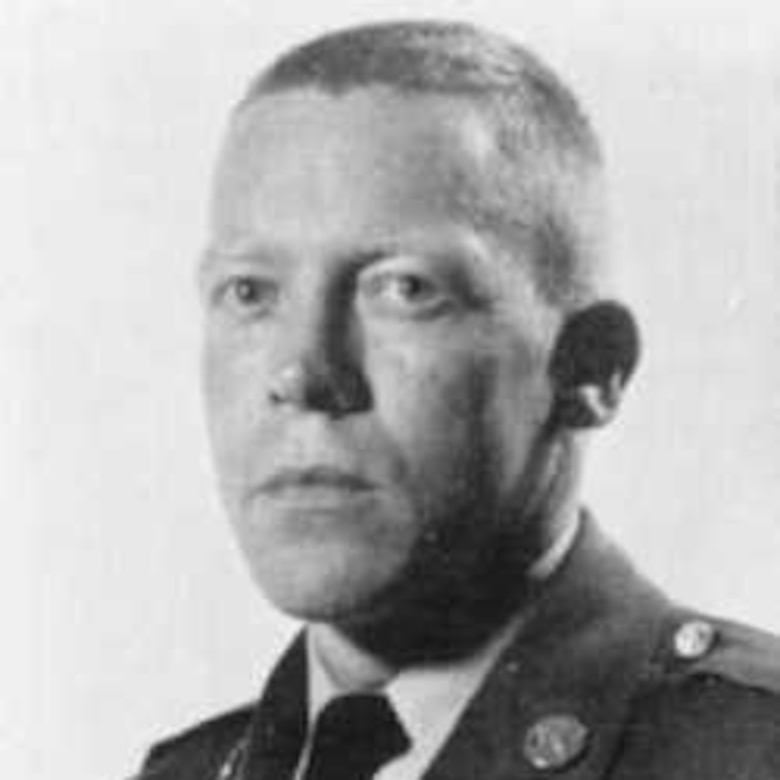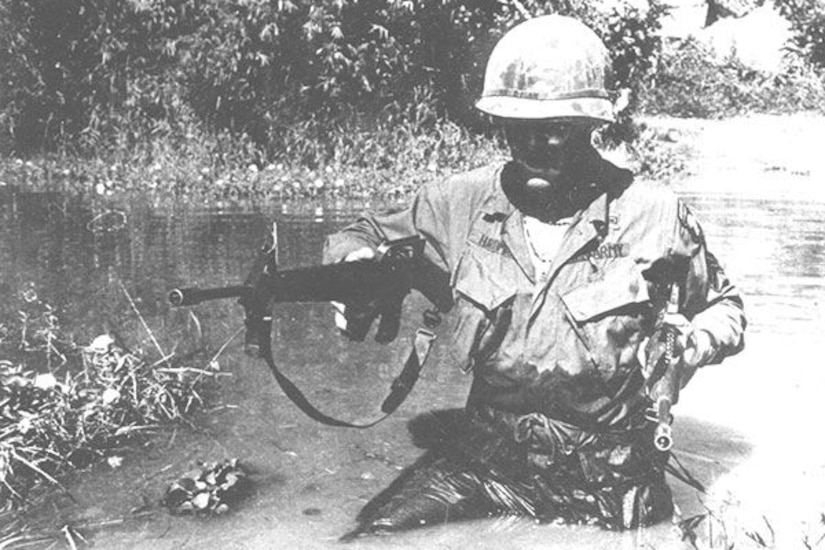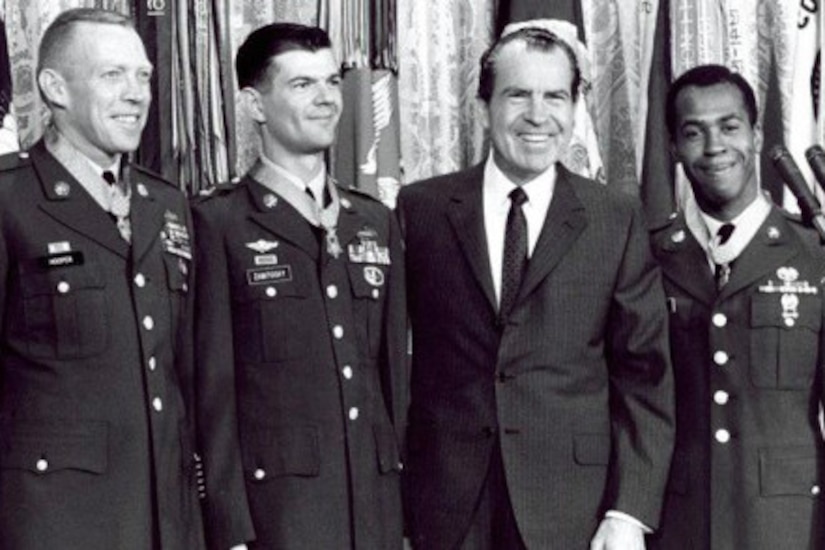Medal of Honor Monday: Army Sgt. Joe Ronnie Hooper
JUNE 17, 2019 |
Several Medal of Honor recipients earn the honor for a moment of action. But for Army Sgt. Joe Ronnie Hooper, his moment lasted about seven hours — fitting, considering he’s one of the most decorated soldiers of the Vietnam War.
Hooper was born Aug. 8, 1938, in Piedmont, South Carolina, but he grew up in Washington state. He enlisted in the Navy at 17, serving until his honorable discharge in 1959. He later decided to join the Army.
Hooper was on his second tour of duty in Vietnam during 1968’s Tet Offensive. He was a 29-year-old sergeant in Delta Company, 2nd Battalion, 101st Airborne Division, when he earned his Medal of Honor.
On Feb. 21, 1968, Hooper’s squad was northwest of Hue City, South Vietnam. They were attacking a heavily defended enemy position near a 20-foot-wide stream when a hail of gunfire and rockets came down on them from the Viet Cong — guerrilla allies of the North Vietnamese from the south.
Most of the company was pinned down by the gunfire, but Hooper and five other paratroopers weren’t, so he led them across the stream and into the heart of enemy fire, overtaking five enemy bunkers on the opposite shore. Shortly after, the rest of his company saw what they’d done and joined the fight.
Over the next seven hours, here are some of the gallant things Hooper did:
- As more soldiers joined the fight, some were injured. Hooper ran back into the intense fire to save a wounded soldier. He was seriously injured doing this, but refused medical attention.
- Hooper single-handedly stormed three more enemy bunkers and destroyed them with hand grenades and rifle fire.
- He shot two enemy soldiers who had attacked and injured a chaplain, then took the chaplain to safety.
- During a sweep of the area, he destroyed three more buildings where enemy shooters had been hiding.
- At one point, Hooper was attacked by a North Vietnamese officer. According to fellow soldier Lonnie Thomas, “The officer’s rifle jammed and Sgt. Hooper was out of ammo as the enemy tried to escape. But Sgt. Hooper chased him down and stabbed him with his bayonet.”
- From there, he destroyed another bunker and killed everyone inside who was firing on his fellow soldiers.
- As his squad reached the final line of enemy resistance, they were raked by gunfire from four bunkers on their left flank. Hooper was able to run along the bunker line through a trench, tossing grenades into each of them. All but two enemy soldiers were killed. He took out two more bunkers after that.
- Despite having no ammunition left for his rifle, Hooper raced across an open field to rescue a wounded man trapped in a trench. According to Thomas, “I called to him and tossed him a .45-caliber pistol, mentioning that he might need it. No sooner had he caught it and turned than he came face to face with an NVA raising a rifle to Sgt. Hooper’s head. Sgt. Hooper calmly shot the man dead with the pistol, then carried the wounded man back to safety.”
- Hooper finished taking out the final pocket of enemy resistance by shooting three North Vietnamese officers.
All in a day’s work, right?
While the enemy had been neutralized, Hooper wasn’t done. He established a final line and reorganized his men before finally allowing himself to get medical treatment for the many wounds he’d suffered. He didn’t consent to being evacuated until the next morning, when news reports said he’d passed out from blood loss.
Hooper’s valor, leadership and selflessness were directly responsible for his company’s success that day. The courage he showed served as an example for all who served with him.
A fellow soldier, Sgt. George Parker, said this in his lengthy eyewitness statement of what happened that day: “Sgt. Hooper in one day accomplished more than I previously believed could have been done in a month by one man, and he did it all while wounded. It wasn’t just the actual count of positions overrun and enemy killed which was important. But far more so was the fantastic inspiration he gave every man in the company.”
The Army commissioned Hooper as a second lieutenant after that. He received the Medal of Honor from President Richard Nixon at the White House on March 7, 1969. Reports show he even asked the president for special permission to return to Vietnam.
Hooper retired from military service in 1974. He’s known as one of the most decorated soldiers of the Vietnam War, having earned 37 medals, including two Silver Stars, six Bronze Stars and eight Purple Hearts. The Army also credited him with killing 115 North Vietnamese fighters.
Hooper went on to breed horses and teach a class on horse betting after leaving the Army. He and his wife, Faye, also had a daughter.
Hooper died of a cerebral hemorrhage in Louisville, Kentucky, May 6, 1979, at age 40. He was buried at Arlington National Cemetery.
 Soldier of Fortune Magazine The Journal of Professional Adventurers
Soldier of Fortune Magazine The Journal of Professional Adventurers








